Elder Tree
- Scientific Name: Sambucus Nigra
- Plant Family: Caprifoliaceae
- Parts Used: Bark, Flowers, Berries, Leaves
- Actions: Vary based on what part of the plant is used
- Bark: Purgative, emetic, diuretic
- Leaves: Externally emollient and vulnerary, Internally as purgative, expectorant, diuretic and diaphoretic
- Flowers: Diaphoretic, anti-catarrhal, pectoral
- Berries: Diaphoretic, diuretic, laxative
Varieties:
The elder tree grows in Britain and from Scandinavia to the coast of Africa, a twisted, shrubby tree, seldom more than 30 ft high and common in hedgerows and waste places. The strong smelling leaves are divided into broad leaflets, creamy flowers grow in sweetly scented clusters in midsummer and in the late summer black juicy berries ripen and fall.
Note: Do not confuse European Elder (Sambucus Nigra) with American Elder, Elderflower, or Dwarf Elder. There are other, similar elder species in Europe and North America but these have different properties. For a definitive list of the various elder species, and to verify that you are using Sambucus nigra (European or Black Elder) visit this link via wikipedia: Sambucus
The Basics:
Elder has a very long history of household use as a medicinal herb and is also much used by herbalists. The plant has been called “the medicine chest of country people.”
The bark and leaves of the elder have a violent purgative action when taken internally and are not safe. However, used externally, the juice of the leaves is cooling, soothing and healing and thus has been a common and efficient domestic remedy for several thousand years.
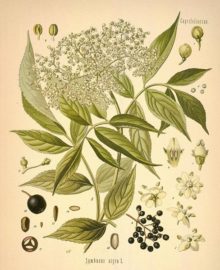 The inner bark is collected from young trees in the autumn and is best sun-dried. It is diuretic, a strong purgative and in large doses emetic. It is used in the treatment of constipation and arthritic conditions. An emollient ointment is made from the green inner bark. The pith of young stems is used in treating burns and scalds. A homeopathic remedy is made from the fresh inner bark of young branches. It relieves asthmatic symptoms and spurious croup in children.
The inner bark is collected from young trees in the autumn and is best sun-dried. It is diuretic, a strong purgative and in large doses emetic. It is used in the treatment of constipation and arthritic conditions. An emollient ointment is made from the green inner bark. The pith of young stems is used in treating burns and scalds. A homeopathic remedy is made from the fresh inner bark of young branches. It relieves asthmatic symptoms and spurious croup in children.
The leaves are used primarily for bruises, sprains, wounds and chilblains. The leaves can be used both fresh or dry. The leaves are purgative, but are more nauseous than the bark. They are also diaphoretic, diuretic, expectorant and haemostatic. The juice is said to be a good treatment for inflamed eyes. An ointment made from the leaves is emollient and is used in the treatment of bruises, sprains, chilblains, wounds etc. It has been reported that Elder Leaves may be useful in an ointment for tumors.
The flowers are the main part used in modern herbalism, Elder flowers are ideal for the treatment of colds and influenza. They are indicated in any catarrhal inflammation of the upper respiratory tract such as hay fever and sinusitis. Catarrhal deafness responds well to Elder Flowers. The fresh flowers are used in the distillation of “Elder Flower Water”. The flowers can be preserved with salt to make them available for distillation later in the season. The water is mildly astringent and a gentle stimulant. It is mainly used as a vehicle for eye and skin lotions.
The dried flowers are diaphoretic, diuretic, expectorant, galactogogue and pectoral. An infusion is very effective in the treatment of chest complaints and is also used to bathe inflamed eyes. The infusion is also a very good spring tonic and blood cleanser. Externally, the flowers are used in poultices to ease pain and abate inflammation. Used as an ointment, it treats chilblains, burns, wounds, scalds etc.
Elder Berries have similar properties to the Flowers, with the addition of their usefulness in rheumatism. The fruit is depurative, weakly diaphoretic and gently laxative. A tea made from the dried berries is said to be a good remedy for colic and diarrhoea. The fruit is widely used for making wines, preserves etc., and these are said to retain the medicinal properties of the fruit.
The root is no longer used in herbal medicine but it formerly had a high reputation as an emetic and purgative that was very effective against dropsy.
Are Elderberries poisonous?
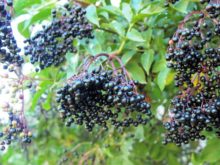 Most species of Sambucus berries are edible when picked ripe and then cooked. Both the skin and pulp can be eaten. However, it is important to note that most uncooked berries and other parts of plants from this genus are poisonous. Sambucus nigra is the variety of Elderberry that is most often used for health benefits as it is the only variety considered to be non-toxic even when not cooked, but it is still recommended to cook the berries at least a little to enhance their taste and digestibility.
Most species of Sambucus berries are edible when picked ripe and then cooked. Both the skin and pulp can be eaten. However, it is important to note that most uncooked berries and other parts of plants from this genus are poisonous. Sambucus nigra is the variety of Elderberry that is most often used for health benefits as it is the only variety considered to be non-toxic even when not cooked, but it is still recommended to cook the berries at least a little to enhance their taste and digestibility.
Habitat and Cultivation:
Hedgerows, scrub, woods, roadsides, waste places etc, especially on disturbed base-rich and nitrogen rich soils. Elder grows easily from cuttings or by root division and can be pruned or shaped into a thick deciduous hedge.
Seed – best sown as soon as it is ripe in the autumn in a cold frame, when it should germinate in early spring. Stored seed can be sown in the spring in a cold frame but will probably germinate better if it is given 2 months warm followed by 2 months cold stratification first. Prick out the seedlings into individual pots when they are large enough to handle. If good growth is made, the young plants can be placed in their permanent positions during the early summer. Otherwise, either put them in a sheltered nursery bed, or keep them in their pots in a sheltered position and plant them out in spring of the following year.
Collection:
Bark: The Inner Bark should be collected in autumn, from young trees. It is best dried in a moderate sun-heat, being taken indoors at night. When ready for use, it is a light grey, soft and corky externally, with broad fissures; white and smooth on the inner surface. The taste of the bark is sweetish at first, then slightly bitter and nauseous. It is without odor. The flowers are collected in spring and early summer and dried as rapidly as possible in the shade. The bark and berries are best collected in late summer and early fall.
Leaves: Elder leaves are used both fresh and dry. Pick and dry the leaves as the tree comes into flower, usually in June and July. Gather only in fine weather, in the morning, after the dew has been dried by the sun. Strip the leaves off singly, rejecting any that are stained or insect-eaten. Drying is then done in the usual manner.
Flowers: Gather the blossoms as soon as they are fully open and dry quickly in a cool oven – this takes less than an hour.
Berries: Collect the berries when fully ripe. The fresh berries store satisfactorily in plastic bags in a deep freeze.
Preserving the Flowers:
Pickled: Elder Flowers are chiefly used in pharmacy in the fresh state for the distillation of Elder Flower Water, but as the flowering season only lasts for about three weeks in June, the flowers are often salted, so as to be available for distillation at a later season, 10 per cent of common salt being added, the flowers being them termed ‘pickled.’ They are also dried, for making infusions. The pickled flowers, however, gradually acquire an agreeable fragrance and are therefore generally used for the preparation of Elder Flower Water. A similar change also takes place in the water distilled from the fresh flowers.
Dried: The flowers are not easily dried of good color. If left too late exposed to the sun before gathering, the flowers assume a brownish color when dried, and if the flower bunches are left too long in heaps, to cause the flowers to fall off, these heaps turn black. If the inflorescence is only partly open when gathered, the flower-heads have to be sifted more than once, as the flowers do not open all at the same time. The best and lightest colored flowers are obtained at the first sifting, when the flowers that have matured and fallen naturally are free from stalks, and dried quickly in a heated atmosphere. They may be very quickly dried in a heated copper pan, being stirred about for a few minutes. They can also be dried almost as quickly in a cool oven, with the door open. Quickness in drying is essential.
Medicinal Uses:
Stew a double handful of fresh Elder leaves in a little water for at least 15 minutes, then strain the liquid and use to bathe inflammations, bruises, sprains, eczema, and other skin complaints, burns, scalds or boils. Alternatively, boil crushed leaves in lard and beeswax and strain well, or crush fresh leaves in linseed or olive oil.
Elderflower tea calms the nerves, soothes headaches, is cooling for fevers, and will help cure a throat infection. Use externally as a compress for tired and inflamed eyes and as a wash for the complexion. Boiled in lard and strained like the leaves, the flowers will also make a soothing ointment. They are often used in cosmetic preparations.
Elderberries have the gentlest action of all the parts, they are mildly painkilling and are best known as a treatment for sore throats and coughs. Hot elderberry juice, flavored with honey and lemon, is ideal for colds, flu, or bronchitis, and the spiced, bottled syrup or vinegar added to hot water makes a delicious, healthy winter drink.
According to Web MD, Elderberry is used for “the flu” (influenza), H1N1 “swine” flu, HIV/AIDS, and boosting the immune system. It is also used for sinus pain, back and leg pain (sciatica), nerve pain (neuralgia), and chronic fatigue syndrome (CFS) . Some people use Elderberry for hay fever (allergic rhinitis), cancer, as a laxative for constipation, to increase urine flow, and to cause sweating.
Preparation and Dosage:
Infusion: Pour a cup of boiling water onto 2 teaspoons of the dried or fresh blossoms and leave to infuse for 10 minutes. This should be drunk hot three times a day.
Juice: Boil fresh berries in water for 2 to 3 minutes, then express the juice, to preserve, bring the juice to the boil with 1 part honey to 10 parts of juice. Take 1 glass diluted with hot water twice a day.
Ointment: Take 3 parts of fresh Elder leaves and heat them with 6 parts of melted petroleum jelly until the leaves are crisp, strain and store.
Tincture: Take 2 to 4 ml of the tincture (made from the flowers) three times a day.
Combinations:
For colds and fevers it may be used with Peppermint, Yarrow or Hyssop. For influenza combine it with Boneset. For catarrhal states mix it with Golden Rod.
As a food source:
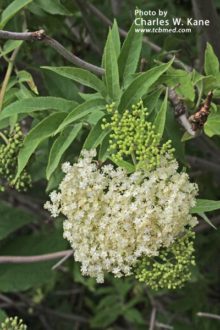 There are many 18th and 19th century recipes for pickled or boiled elder shoots, the new green growths that appear among the old stems in the spring. “The largest and youngest shoots of elder, which put out in the middle of May, the middle stalks are most tender and biggest … peel off the outward peel or skin” (Glasse 1747), pickled with spices as a substitute for bamboo shoots (Eaton 1822).
There are many 18th and 19th century recipes for pickled or boiled elder shoots, the new green growths that appear among the old stems in the spring. “The largest and youngest shoots of elder, which put out in the middle of May, the middle stalks are most tender and biggest … peel off the outward peel or skin” (Glasse 1747), pickled with spices as a substitute for bamboo shoots (Eaton 1822).
Eat the blossoms whole as sweet fritters, or add their fragrant, muscated flavor to stewed fruit (especially gooseberries), to jams, jellies, and vinegar. You can also use them to make Elderflower wine or the sparkling ‘champagne’.
A popular medieval recipe was for a ‘sambocade‘, a tart of Elderflowers, curds and egg white. Quantities of berries should not be eaten raw as they will have a strong purgative effect, but can be cooked in jams and jellies, combined with apples in tarts and made into syrups, vinegarand wine.
Here’s a very old recipe for pickling Elder buds: Take elder buds when they are the bigness of small walnuts, lie them in a strong salt and water for ten days, and then scald them in fresh salt and water, put in a lump of allum, let them stand in the corner end close cover’d up, and scalded once a day whilst green.
Historically:
The generic name Sambucus occurs in the writings of Pliny and other ancient writers and is evidently adapted from the Greek word Sambuca, the Sackbut, an ancient musical instrument in much use among the Romans, in the construction of which, it is surmised, the wood of this tree, on account of its hardness, was used.
The difficulty, however, of accepting this is that the Sambuca was a stringed instrument, while anything made from the Elder would doubtless be a wind instrument, something of the nature of a Pan-pipe or flute. Pliny records the belief held by country folk that the shrillest pipes and the most sonorous horns were made of Elder trees which were grown out of reach of the sound of cock-crow. At the present day, Italian peasants construct a simple pipe, which they call sampogna, from the branches of this plant.
The popular pop-gun of small boys in the country has often been made of Elder stems from which the pith has been removed, which moved Culpepper to declare: ‘It is needless to write any description of this (Elder), since every boy that plays with a pop-gun will not mistake another tree for the Elder.’ Pliny’s writings also testify that pop-guns and whistles are manufactures many centuries old!
Folk Names:
- Black Elder
- Common Elder
- Pipe Tree
- Bore Tree
- Bour Tree
- Hylder
- Hylantree
- Eldrum
- Ellhorn
- Hollunder
- Sureau
Folklore:
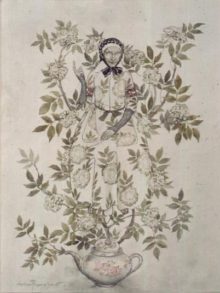 The elder was closely associated with protective magic, and elder wood thought variously to be the wood of the Cross and of the tree from which Judas hanged himself. In Denmark, Hylde-Moer, the Eldertree Mother, lived in its branches and her permission had to be begged before the wood was cut or burned.
The elder was closely associated with protective magic, and elder wood thought variously to be the wood of the Cross and of the tree from which Judas hanged himself. In Denmark, Hylde-Moer, the Eldertree Mother, lived in its branches and her permission had to be begged before the wood was cut or burned.
Other Uses:
The wood of old trees is white and of a fine, close grain, easily cut, and polishes well, hence it was used for making skewers for butchers, shoemakers’ pegs, and various turned articles, such as tops for angling rods and needles for weaving nets, also for making combs, mathematical instruments and several different musical instruments, and the pith of the younger stems, which is exceedingly light, is cut into balls and is used for electrical experiments and for making small toys. It is also considerably used for holding small objects for sectioning for microscopical purposes.
The leaves have an unpleasant odor when bruised, which is supposed to be offensive to most insects, and a decoction of the young leaves is sometimes employed by gardeners to sprinkle over delicate plants and the buds of the flowers to keep off the attacks of aphids and minute caterpillars.
The bark of the older branches has been used in the Scotch Highlands as an ingredient in dyeing black, also the root. The leaves yield, with alum, a green dye and the berries dye blue and purple, the Juice yielding with alum, violet; with alum and salt, a lilac color.
The leaves are said to be valued by the farmer for driving mice away from granaries and moles from their usual haunts.
Fresh Elder branches were hung in the dairy during cheese making and the leaves rubbed on the skin against midges. Use a strong decoction of the leaves as an insecticide spray in the garden, and build the compost heap around the tree as it is said to benefit from excretions from the roots.
Special Precautions and Warnings:
Taking an elderberry juice extract is POSSIBLY SAFE when taken by mouth for up to 12 weeks. It’s not known if taking elderberry juice extract is safe when used for long periods of time.
Elderberry is POSSIBLY UNSAFE when the leaves, stems, unripened fruit, or uncooked fruit is consumed. The cooked elderberry fruit seems to be safe, but raw and unripe fruit might cause nausea, vomiting, or severe diarrhea
“Autoimmune diseases” such as multiple sclerosis (MS), lupus (systemic lupus erythematosus, SLE), rheumatoid arthritis (RA), or other conditions: Elderberry might cause the immune system to become more active, and this could increase the symptoms of autoimmune diseases. If you have one of these conditions, it’s best to avoid using elderberry.
Drug Interactions:
Medications that decrease the immune system (Immunosuppressants) interacts with Elderberry. Elderberry can increase the immune system. Taking elderberry along with some medications that decrease the immune system might decrease the effectiveness of medications that decrease the immune system.
Some medications that decrease the immune system include azathioprine (Imuran), basiliximab (Simulect), cyclosporine (Neoral, Sandimmune), daclizumab (Zenapax), muromonab-CD3 (OKT3, Orthoclone OKT3), mycophenolate (CellCept), tacrolimus (FK506, Prograf), sirolimus (Rapamune), prednisone (Deltasone, Orasone), corticosteroids (glucocorticoids), and others.
Pregnancy and breast-feeding: Not enough is known about the safety of using elderberry during pregnancy and breast-feeding. Stay on the safe side and avoid use.
Recipes and Formulas:
Rennie Luttrull: queen-annes-lace-seeds
Rosanna: Spignel aka Bald Money
Annamarie Squatrito: Fumitory
EILEEN Klinghagen: Pumpkin
Mahmudul Hasan: Celery
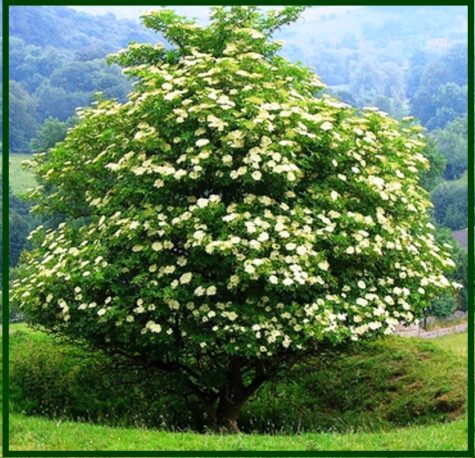
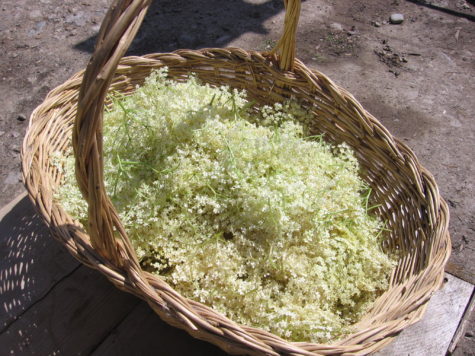


Leave a Reply